
Mount Baota (Pagoda)
Seated in the southeast of Yan’an and on the west bank of Yanhe River, Mount Baota is deemed as the emblem of Yan’an---the holy land of the Chinese revolution. There are numerous historical sites and revolutionary relics up on the mountain. It is said that you do not really make it to Yan’an unless you ascend this pagoda.
Nanniwan Revolutionary Site
Lying forty-five kilometers to the southeast of Yan’an, Nanniwan was once a desolate place overgrown with weeds. Thanks to the Mass Production Movement led by the CPC, it was turned into a prosperous land which now boasts a lot of former residences of great leaders and revolutionary monuments. Looking into the expanse of the terrace in the distance, one will be brimming with patriotic sentiments and heartened by the spirit of that time.
Yangjialing Revolutionary Site
Located three kilometers to the northwest of Yan’an, Yangjialing was home to headquarter of the CPC from 1938 to 1947 during which the Mass Production Movement and the Yan’an Rectification Movement (1941-1945) were carried out. It was also the place where Yan’an Literature and Art Forum (1942) and the Seventh National Congress of the CPC (1945) took place.
①M(fèi)ount Baota
②Nanniwan Revolutionary Site
③Yangjialing Revolutionary Site
Zaoyuan Revolutionary Site
Zaoyuan was originally the manor of a warlord in northern Shaanxi. The Central Department of Social Affairs (CDSA) and other departments of the CPC moved here in early 1939, followed by the Central Secretariat. It is the former residence of many leaders, including Mao Zedong, Zhu De, Liu Shaoqi and Zhou En lai.
Mount Fenghuang Revolutionary Site
Mount Fenghuang was the first station of the central committee when it entered Yan’an. Here Mao Zedong hosted the Luochuan Convention (1937), the Sixth Plenary Session of the Sixth Central Committee (1938) and so on. It also played a key role in the transition from the Agrarian Revolution to the War of Resistance against Japan.
Wangjiaping Revolutionary Site
Wangjiaping was once the seat of the Central Military Commission (CMC) where you can visit the former residence of leaders such as Mao Zedong and Peng Dehuai. The auditorium and meeting rooms of the CMC are also open to the public. You can’t fully understand the greatness of the victory of the modern Chinese revolution until you personally come here.
The Site of the Government of Shaanxi-Gansu-Ningxia Border Area
In 1937, the Shaanxi-Gansu Soviet Area was renamed as the Shaanxi-Gansu-Ningxia Border Area, and the government of this area was established accordingly by the CPC. During the War of Resistance against Japan, it was home to the central committee and the CMC. Moreover, it was the political center and the general rear in the base areas behind the enemy’s lines.
Yan’an Revolutionary Memorial Museum
Yan’an Revolutionary Memorial Museum is among the earliest built of its kind. Rich in content and of great historical value, this large-scale museum proves to be very inspiring. There exhibits a large collection of revolutionary relics from which you can learn the stories and exploits of the CPC and the people’s army in these thirteen years.
1. Zaoyuan Revolutionary Site
2. Wangjiaping Revolutionary Site
3. Yan’an Revolutionary Memorial Museum
Anti-Japanese Military and Political University
Originally known as the “Red Army College,” the Anti-Japanese Military and Political University (Kang Da for short) was founded in Wayaobu in 1936 and later moved to Yan’an. It was managed by some great statesmen such as Mao Zedong, who had been the chairman of its education commission.
Designed to cultivate military personnel, it was the cradle of political and military talents during the Agrarian Revolution and the War of Resistance against Japan. Due to the victory of the latter, this university finished its nine-year journey, fulfilling successfully its historical mission.
Lu Xun Art College
Lu Xun Art College was a literary and art institute established in 1938 to foster literary and art workers during the War of Resistance against Japan. Mao Zedong delivered a speech at its inaugural ceremony and inscribed its name and motto, which was “tense, serious, hard-working and open-minded.”
In accordance with national political and cultural policies, the college advocated “creating while learning.” Gradually it became a center to learn Marxist theory on literature and arts and was later acclaimed as “the shrine of Chinese new literature” and “the promise of national artists.” It offered a variety of courses on literature, drama, music, arts and so on, and produced a total of 685 students in seven and a half years. In April, 1943, it became a school of Yan’an University.
Location: South foot of Mount Xianwa, Wuqi Town, Wuqi County
Bus Route: take the regular bus from Yan’an to Wuqi
Wayaobu Revolutionary Site
Location: Erdaojie, Wayaobu Town, Zichang County
Bus Route: take the regular bus from Yan’an to Zichang
Luochuan Convention Site
Location: Fengjia Village, Yongxiang Town, Luochuan County (in the south of Yan’an)
Bus Route: take a bus from Luochuan, travel northbound on the 210 National Road for around ten kilometers
1.Anti-Japanese Military and Political University
2.Luochuan Convention Site
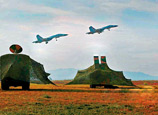


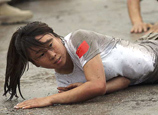


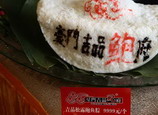
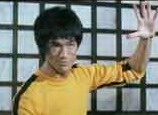

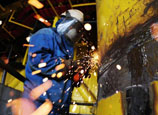






 Bodyguard trainees experience 'Hell Week' in Beijing
Bodyguard trainees experience 'Hell Week' in Beijing


![]()
